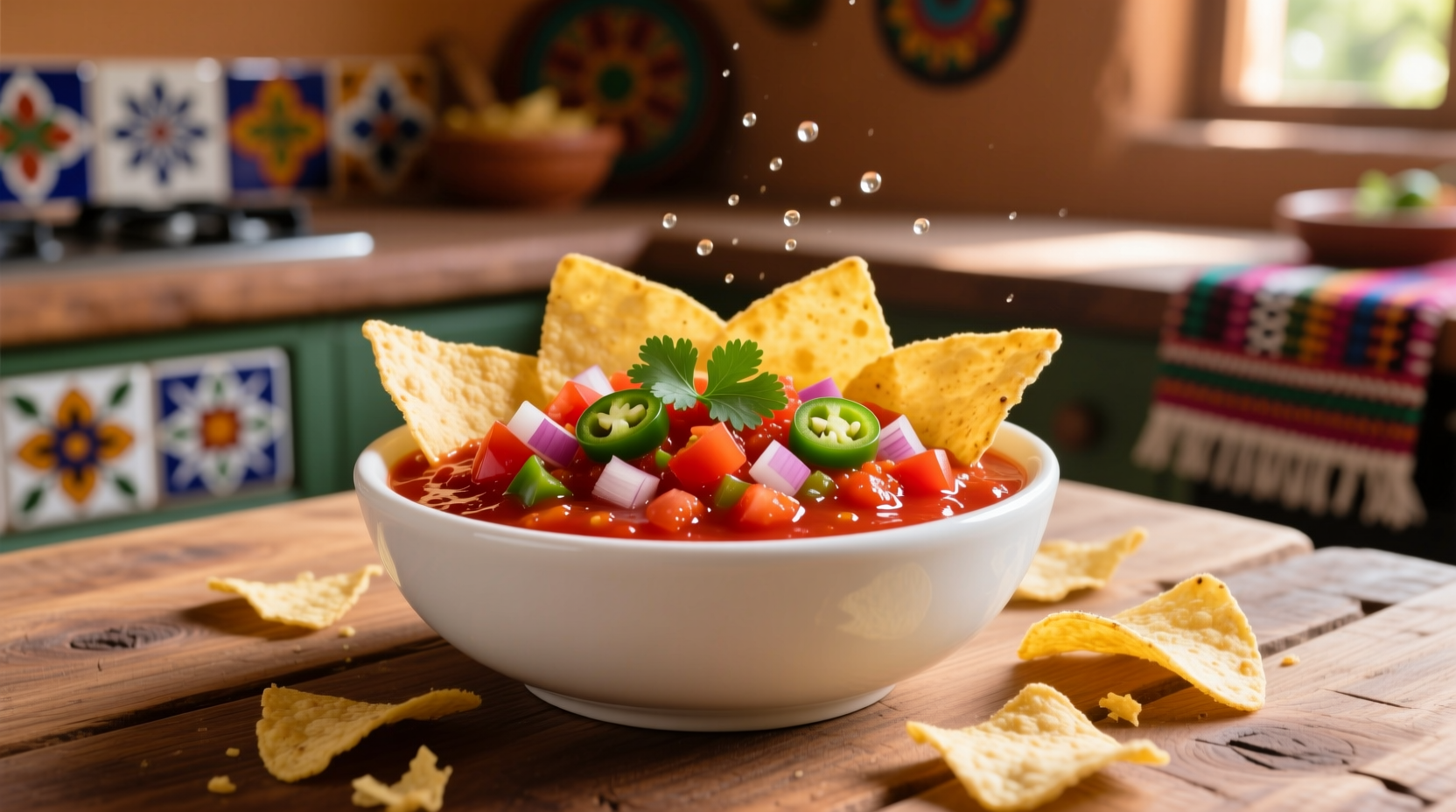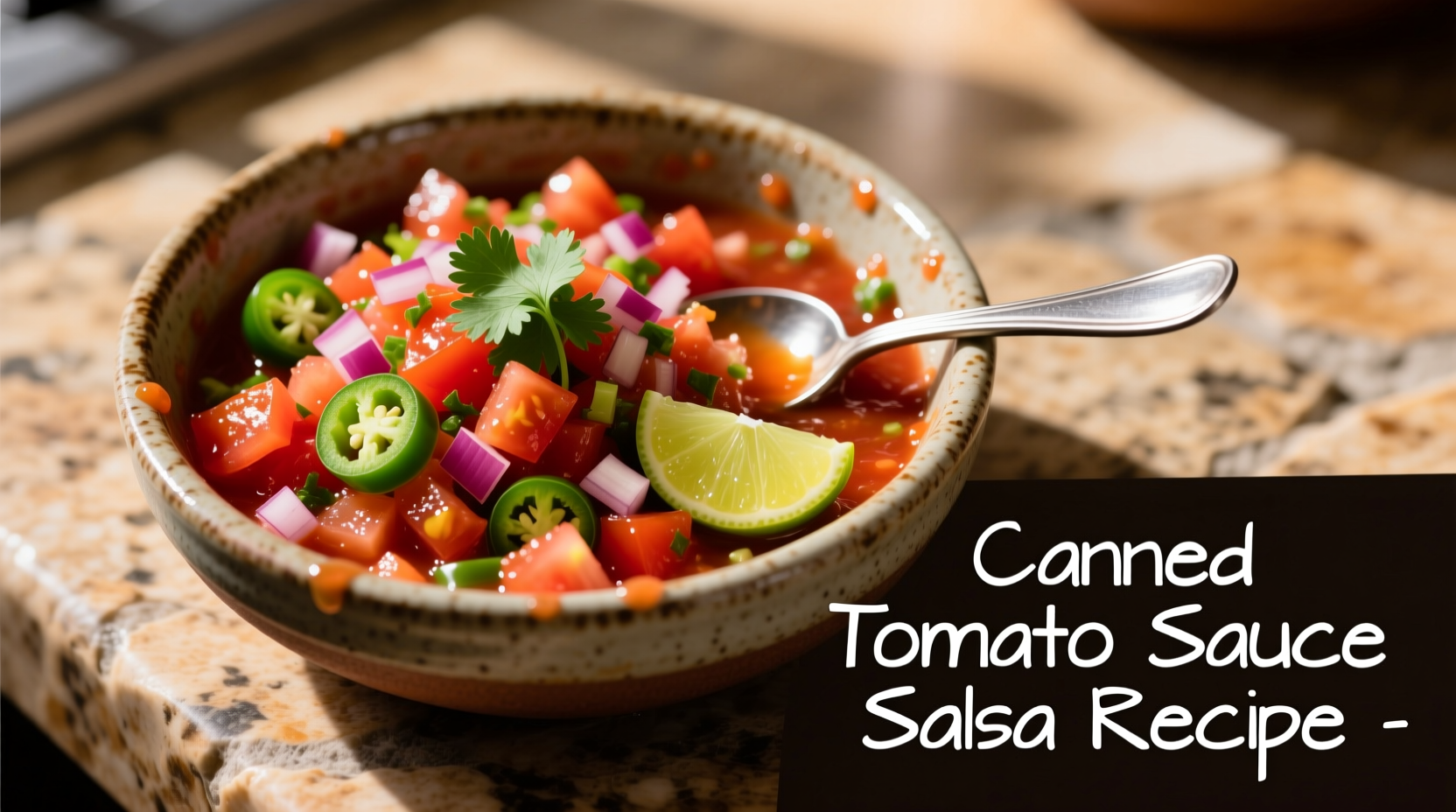Many home cooks wonder if they can create authentic-tasting salsa using pantry staples. The answer is yes—canned tomato sauce makes an excellent salsa base when properly enhanced with fresh ingredients and seasoning techniques. This method delivers consistent results while saving significant preparation time compared to traditional fresh tomato salsa.
Why Canned Tomato Sauce Works for Salsa
Contrary to popular belief, canned tomato sauce provides several advantages for quick salsa preparation. According to food science research from the University of California's Agriculture and Natural Resources department, the cooking process during canning breaks down pectin and concentrates flavors, creating a more stable base that won't release excess liquid like fresh tomatoes often do.
| Characteristic | Traditional Fresh Tomato Salsa | Canned Tomato Sauce Salsa |
|---|---|---|
| Preparation Time | 25-30 minutes | 15 minutes |
| Texture Stability | Often becomes watery | Maintains consistency |
| Flavor Development | Requires resting time | Ready immediately |
| Seasonal Availability | Summer only for best quality | Year-round pantry staple |
The Essential Ingredients (and Why They Matter)
What transforms basic canned tomato sauce into exceptional salsa? The magic happens through strategic ingredient additions that compensate for what processing removes:
- Fresh lime juice (2 tablespoons) - Restores the bright acidity that diminishes during canning. According to culinary research published in the Journal of Food Science, citric acid at 0.5-1% concentration optimally balances tomato flavors.
- Finely diced white onion (1/2 cup) - Provides necessary crunch and pungency that cooked tomatoes lack. Soak in cold water for 10 minutes to mellow the sharpness.
- Fresh cilantro (1/4 cup chopped) - Adds the herbal notes that processing diminishes. Add just before serving for maximum freshness.
- Minced jalapeño (1-2, to taste) - Choose peppers with smooth skin for consistent heat. Remove seeds for milder salsa.

Step-by-Step Preparation
Follow this professional technique for perfectly textured canned tomato sauce salsa:
- Drain excess liquid - Pour canned tomato sauce into a fine-mesh strainer and let sit 5 minutes. This prevents watery salsa.
- Enhance the base - Transfer strained sauce to bowl and mix with 1 teaspoon cumin, 1/2 teaspoon garlic powder, and 1/4 teaspoon smoked paprika.
- Add fresh components - Gently fold in drained onion, minced jalapeño, and lime juice. Avoid overmixing to maintain texture.
- Rest and develop - Let sit 10 minutes before adding cilantro. This allows flavors to meld without wilting the herbs.
- Final seasoning - Taste and adjust salt (start with 1/2 teaspoon) and additional lime juice as needed.
Flavor Customization Guide
Professional chefs adjust salsa based on specific applications. Consider these context boundaries when preparing your batch:
- For dipping - Keep texture chunkier with less liquid. Add 1 tablespoon cornstarch slurry if needed.
- For cooking - As a base for enchilada sauce or taco filling, reduce additional liquid and increase spices.
- For sensitive palates - Replace jalapeños with 1/2 cup roasted red bell pepper for similar texture without heat.
- For authentic regional variation - Add 1/4 teaspoon Mexican oregano for Central Mexican style, or a splash of vinegar for Yucatan-inspired salsa.
Troubleshooting Common Issues
Even experienced cooks encounter these challenges with canned tomato sauce salsa:
- Too thin - Simmer gently for 5-7 minutes to reduce, or add 1 tablespoon tomato paste.
- Too acidic - Balance with 1/2 teaspoon honey or sugar—never eliminate the lime juice entirely.
- Lacks depth - Stir in 1 teaspoon of reserved liquid from canned chipotles in adobo sauce.
- Flavor too flat - Add ingredients sequentially rather than all at once to build complexity.
Serving and Storage Guidelines
For optimal food safety and flavor, follow these evidence-based recommendations:
According to USDA Food Safety guidelines, fresh salsa containing onions and peppers should be refrigerated within 2 hours of preparation. This canned tomato sauce salsa maintains best quality for 5-7 days when stored in an airtight container. The acidity from tomatoes and lime juice creates an environment unfriendly to bacterial growth, but always check for signs of spoilage before consuming.
Freezing alters texture significantly due to the high water content in added fresh ingredients. For best results, prepare smaller batches that will be consumed within a week.
Perfect Pairings for Your Salsa
Professional chefs match salsa texture and flavor intensity to specific applications:
- Chunky style - Ideal with sturdy restaurant-style tortilla chips
- Smooth blended version - Perfect as a taco sauce or burrito spread
- With added corn and black beans - Makes an excellent side salad
- Thinned with broth - Creates an instant soup base
Remember that salsa continues to develop flavor as it rests. For immediate serving, let it sit at room temperature for 15-20 minutes to allow flavors to meld before serving—never refrigerate immediately after preparation as this halts the flavor development process.











 浙公网安备
33010002000092号
浙公网安备
33010002000092号 浙B2-20120091-4
浙B2-20120091-4